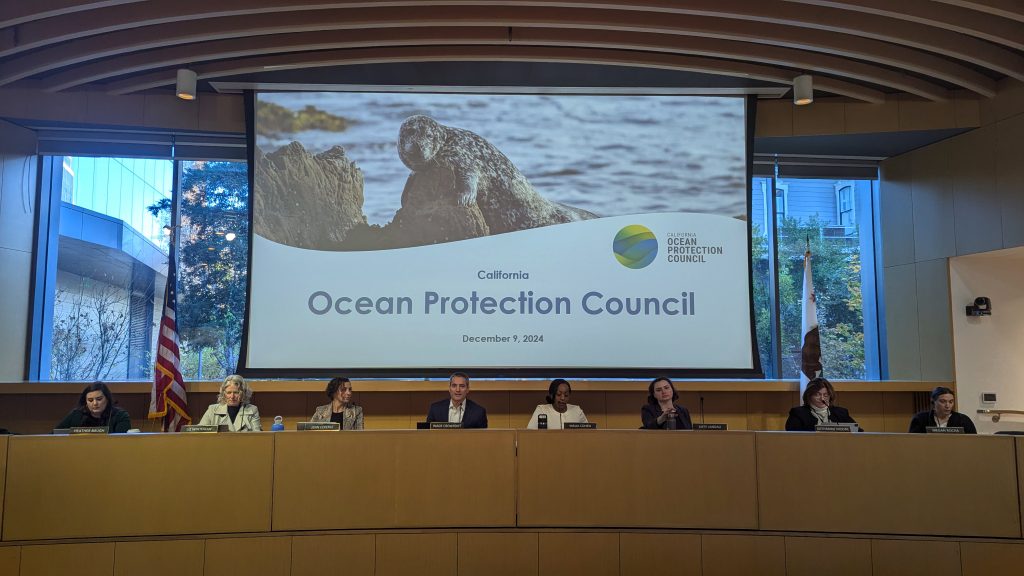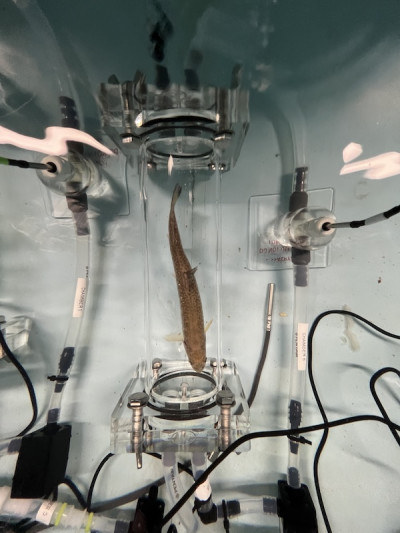Monthly Newsletter – California Coast and Ocean News – December 2024
What’s Happening

December 9, 2024, California Ocean Protection Council Meeting Summary
The December Council meeting advanced initiatives across three of OPC’s Strategic Plan goals to address climate change, advance equity, and conserve biodiversity. Key actions included funding for sea level rise adaptation planning, advancing 30×30 (protecting 30% of California’s coastal waters by 2030), and investments to support resilience of kelp forests. Read the summary.

Public Listening Sessions: 2026-2030 OPC Strategic Plan
Join us for in-person listening sessions starting in January 2025 and share your priorities to inform OPC’s draft 2026-2030 Strategic Plan using the form below by Monday, February 17, 2025. Learn more and register.

SB 1 Sea Level Rise Adaptation Planning Grant Program
The next submission deadline is Friday, December 20, 2024 for project consideration at the March 3, 2025 Council meeting. Learn more about the SB 1 Grant Program.
Job Announcements

OPC is Hiring an Administration and Finance Analyst – Apply by January 2, 2025
OPC is hiring an Associate Governmental Program Analyst to provide critical support for grant administration, accounting, and other administrative duties, to support projects that advance ocean and coastal health. Learn more and apply online.

Partnership Opportunity: California Sea Grant & NOAA Marine Debris Program are Hiring a Marine Debris Extension Fellow
California Sea Grant and the NOAA Marine Debris Program are soliciting applications for a two-year fellowship to support the NOAA Marine Debris Program’s work in California. This position has the opportunity to work closely with OPC in planning and implementing the next iteration of the state’s Ocean Litter Prevention Strategy. Applications are due Monday, December 16, 2024. Learn more and apply online.
Dive In

Rising to the Challenge: Coastal Resilience in the Face of Sea Level Rise
As winter approaches, California’s coast prepares for storms and higher tides, a reminder of the ocean’s immense power and need for action along the coast. This December, King Tides will provide a glimpse into the future – a preview of what higher sea levels may look like in our everyday lives even when extreme weather events are not occurring. With climate change accelerating sea level rise, OPC is leading efforts to ensure our ecosystems and communities are resilient for decades to come… Continue article.
Photo courtesy of California King Tides Project
Data Bite
Beach Water Quality
Ensuring safe and enjoyable public access to California’s beaches depends on maintaining clean waters. Unfortunately, poor water quality, including contamination by pathogens like fecal pollution, puts millions of California beachgoers at potential health risk each year.
During the high visitor summer season, fewer than 20 California beaches account for half of all areas where bacteria levels exceed safe limits statewide. In 2022-2023, beaches with the most exceedances were in San Mateo, Orange, San Francisco, and San Diego counties, including the mouth of the Tijuana River – all areas with high populations and visitation. Meanwhile in winter, higher rates of bacteria are expected as rainfall increases.

Looking ahead, OPC continues to prioritize water quality improvement, public health, and access at all California beaches. Learn more about beach water quality in the 2023 California State of the Coast and Ocean Report and keep an eye out for the 2025 release of the first California Coast and Ocean Report Card for updated data. To explore what OPC is doing to address water quality, visit our Water Quality webpage.
Project Highlight
Completed Proposition 84 Projects
In 2018, OPC approved 24 innovative research projects, allocating $6 million in funding through the Proposition 84 Competitive Grants Program. Administered by California Sea Grant and USC Sea Grant, these projects supported state priorities in sea level rise adaptation and coastal resilience, coastal sediment management, marine pollution, and marine renewable energy. After years of dedicated research, the final data and deliverables were received this past year, marking a significant milestone in advancing science to protect California’s coast and ocean. Explore project findings by visiting OPC’s Prop 84 webpage!
California Sea Grant has published a series of articles highlighting the impactful outcomes of these projects. Topics range from investigating how foundational species in Marine Protected Areas can offset climate change impacts to exploring climate drivers of domoic acid toxicity. The latest article, “Why Are Fish Growing Smaller as Oceans Warm?” offers insights into climate-driven changes in marine life. These stories provide a compelling look at how OPC-funded research informs science-based solutions.
USC Sea Grant has also shared Prop 84 Competitive Grants Program findings. Projects include the first statewide high-resolution assessment of coastal cliff erosion and retreat, which enhances our understanding of shoreline dynamics, and the advancement of portable detection methods for harmful algal bloom species, crucial for safeguarding marine ecosystems and public health. Additionally, research into the interactions between microplastics and pathogen pollutants offers insights into seafood safety, while studies on the workforce impacts of offshore wind development inform sustainable energy transitions.

Sardine collection in San Diego.

Respirometry equipment measures the oxygen consumption rate by a living organism or organic system.

Respirometry experiment in action.
Photos by Joshua Lonthair from the article, “Why Are Fish Growing Smaller as Oceans Warm?“
Staff Spotlight

Sreeja Gopal, Coastal Habitats Program Manager
Sree joined OPC in September 2022 as the Coastal Habitats Program Manager. Prior to that, she earned an MAS degree in Marine Biodiversity and Conservation from Scripps Institution of Oceanography, where her graduate work focused on coastal management. Before that, Sree worked in the pharmaceutical industry for over a decade as a scientist and a team leader after receiving her Ph.D. in Bioengineering from MIT. She enjoys spending time with her family, is an avid gardener and aquarist, and loves being in and around the ocean.

“As OPC’s Coastal Habitats Program Manager, my portfolio involves coastal mapping, habitat restoration, and blue carbon. I am currently working with partners on developing coastal mapping approaches best suited for each coastal habitat type – sandy beaches, rocky intertidal, wetlands, and eelgrass. We aim to create white papers that evaluate different approaches to map and track acreage change of these habitats. Ultimately, these products would help guide OPC’s investments in this critical area. I am passionate about restoring coastal habitats, and believe that high-quality mapping is foundational for effective restoration and tracking. I also enjoy the cross-cutting nature of my work, bringing together partners in academia, governments, and non-profits to help safeguard and restore California’s coastal and marine resources for all Californians.”
Photo of the Month
Have a stunning shot of California’s coast or ocean? Submit a photo to be featured as the Photo of the Month! Whether it’s a serene shoreline, vibrant marine life, or a captivating coastal sunset, share the beauty of our state’s coast through your lens! Submit your photo.

This Month’s Photo: Christine Esler / Sunset at Morro Bay
To stay updated with OPC’s efforts, follow us on social media, and sign up for emails.

